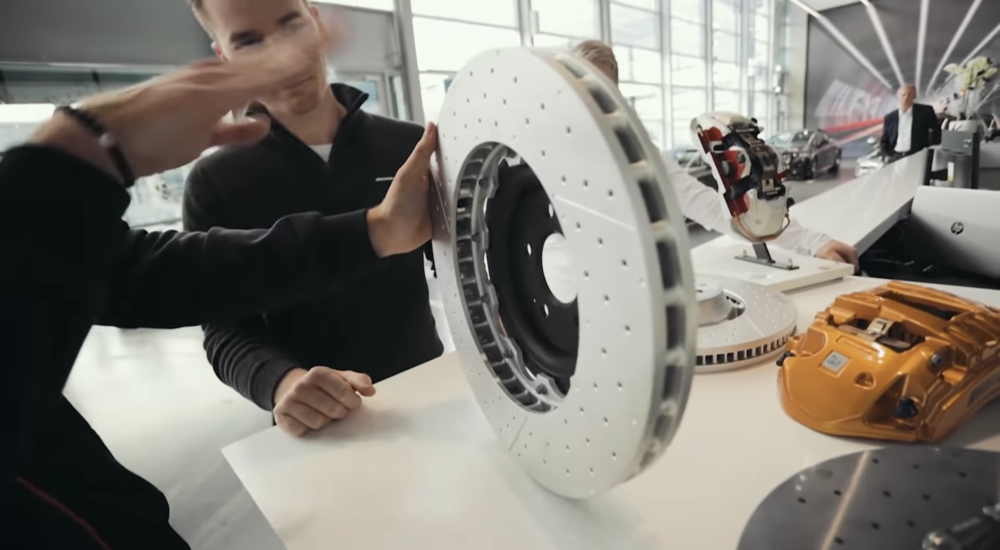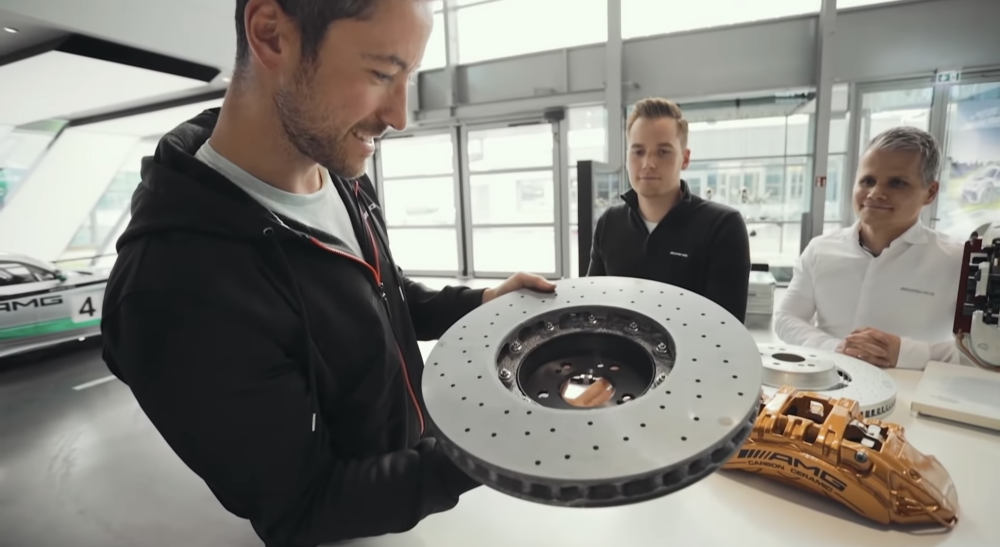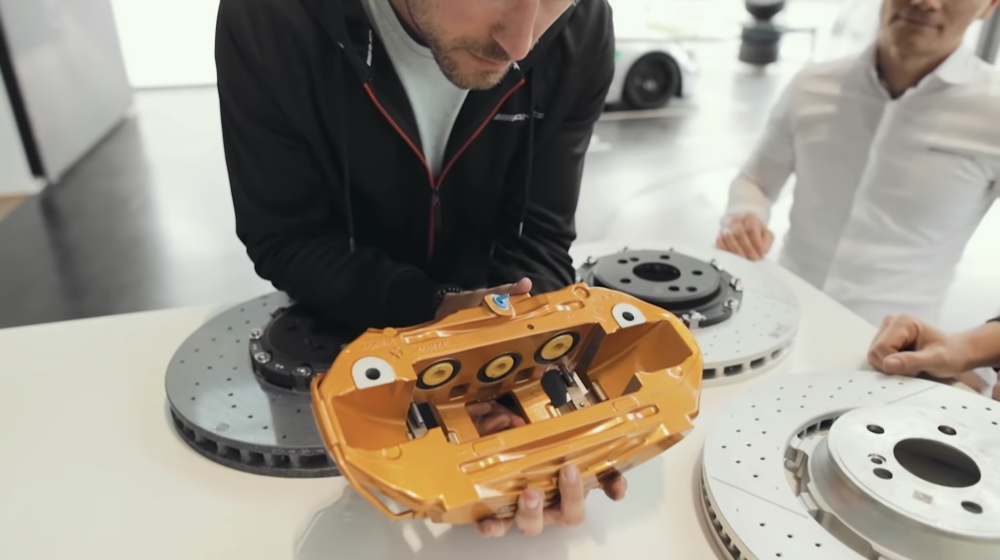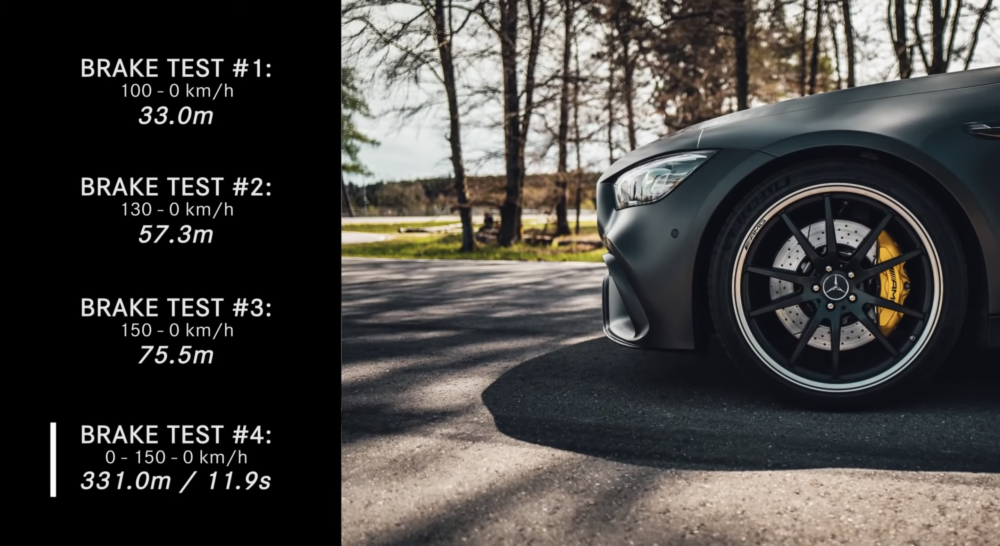Inside Look at the AMG Brake Team: Stopping Power Done Right
A team of engineers and developers at AMG’s Affalterbach headquarters ensures all AMG brakes perform at top levels.
Felix Schönhofer, product manager for Mercedes-AMG, wants to show us that AMG vehicles aren’t all about 0-60. In fact, 60-0 is just as, if not more important. Thats why AMG brakes receive just as much attention as suspension systems, engines, and any other dynamic part of the car. Schönhofer first chats with Dirk Engelhardt, who develops the braking systems, and with Benjamin Haaf, who tests the brakes.
Brake rotor construction is important to performance. Haaf points out their standard AMG rotor, “has an aluminum bowl, and then that bowl is embedded in a friction ring of grey iron.” This is an improvement over a traditional rotor. Reducing weight by two kilos per corner adds up to a significant reduction in weight. But this rotor is only one tier on hierarchy of AMG’s brakes.

Next, Haaf tells us about the sealed bowl rotor. Instead of being embedded in the friction ring, the rotor bowl sits on top, allowing a free-flow of air through the disc. “The cool air that flows through the brake disc is optimally discharged to the outside via the cooling channel,” Haaf notes.

Things change dramatically when the discussions turn to carbon ceramic brakes. All of the advantages of the sealed bowl are magnified by the carbon ceramic material of the friction ring. “Unspring masses, rotating masses… reducing these by this amount means you see a dynamic change in the vehicle,” Haaf says. On those rotors is a massive six-piston caliper.

Haaf says, “These pistons have inserts that serve to thermally insulate the brake fluid, which prevents temperatures from getting too high.” The carbon ceramic rotor itself helps stabilize temperatures with its advanced heat dissipation methods and construction.
Of course, time comes to put all this technology to test. Schönhofer and Haaf head to a proving ground for a few braking tests in an AMG GT 4-door. They decided to perform three tests. Stopping time and distance from 100, 130 and 150 kmh. For this, they use AMG’s own data system, Track Pace.

The interesting observation from these tests, especially the 0-150-0 km/h test is that the brakes need a much shorter distance to slow from 150 than the engine needs to accelerate to 150. Essentially that means your AMG brakes are much much more powerful than its engine. In a performance car, that’s the way things should be.
